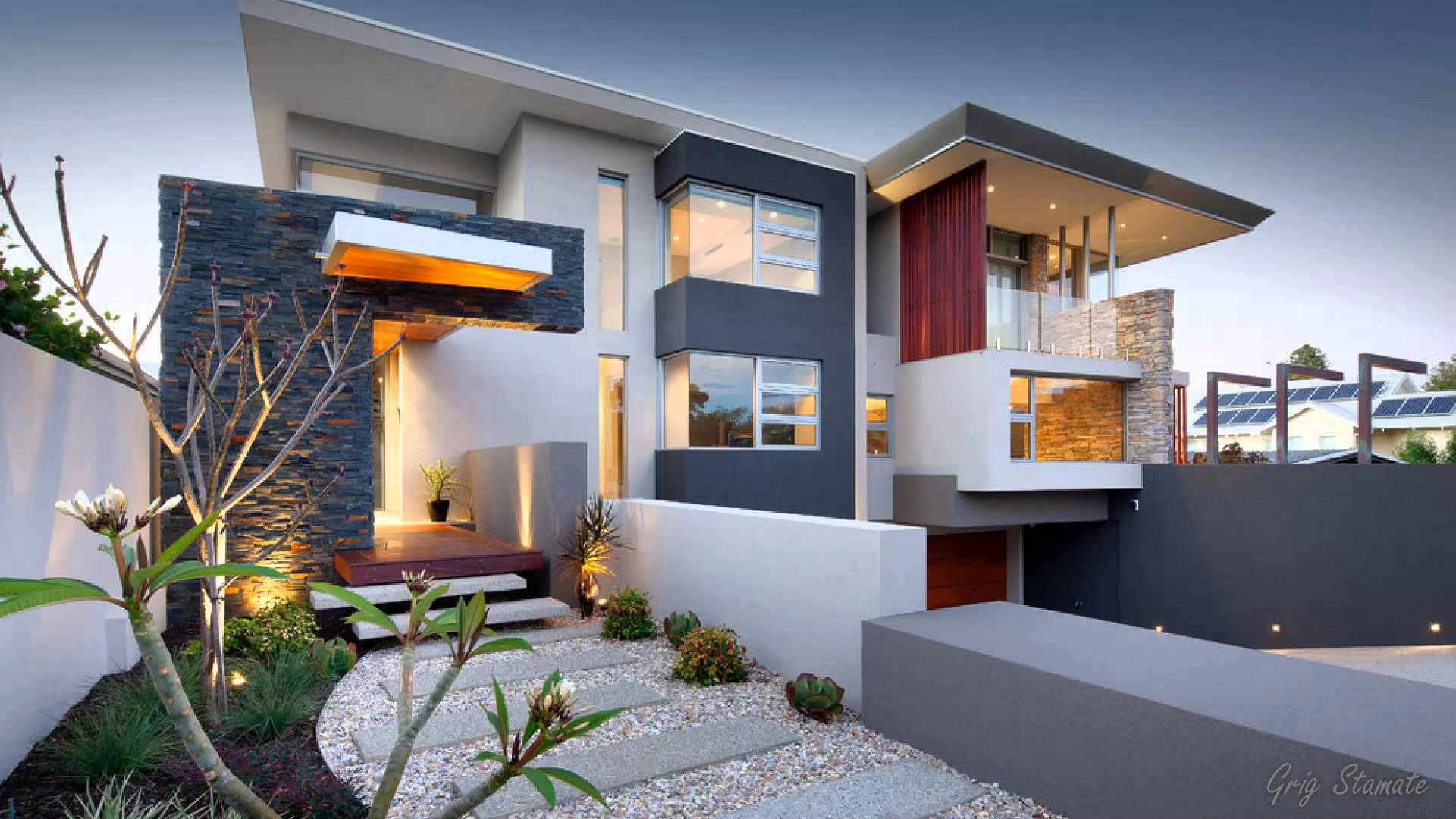Uniqueness of Modern Homes
 Today’s most modern and futuristic homes boast eco-friendly materials, smartphone synchronicity and dazzling designs – but some architects and designers go even further, challenging our notions of home and living. From sculpture to lighting, modern homes find contemporary applications for one of mankind’s oldest materials. Contemporary-Modern style runs the gamut from mid-century modern to the latest designs representing current trends towards sleek, contemporary design. Contemporary-Modern design is characterized by clean, simple lines, a minimum of decoration, lots of glass, and flat or shed rooflines. Many feature unusual open floor plans and indoor/outdoor living spaces. This style includes minimalist and Bauhaus spaces, as well as grid-like glass houses. Modern interior design emphasizes strong lines, a lack of ornamentation and minimal texture; it uses straightforward furniture and dramatic modern art to complement the stark architecture. In a modern house, lighting is a key structural element that accentuates planes and highlights focal points. Modern design is often a love-it or hate-it style — many appreciate its minimalist, uncluttered feel, while others miss the warmth and variety found in other styles. The Modern house was most typically a post-and-beam structure with a flat or broad low-pitched gable or shed roof. Exposed structure, an expressive use of modern materials, and the incorporation of landscaped areas, sometimes inside the house, were the main contributing elements to the architectural character. mall steps going up and down between rooms creates split-level spaces. A midcentury modern might have partial walls, or cabinets of varying heights to create different depths in the space. Rooms have multiple outdoor views, or multiple access points, encouraging an appreciation of healthy living.
Today’s most modern and futuristic homes boast eco-friendly materials, smartphone synchronicity and dazzling designs – but some architects and designers go even further, challenging our notions of home and living. From sculpture to lighting, modern homes find contemporary applications for one of mankind’s oldest materials. Contemporary-Modern style runs the gamut from mid-century modern to the latest designs representing current trends towards sleek, contemporary design. Contemporary-Modern design is characterized by clean, simple lines, a minimum of decoration, lots of glass, and flat or shed rooflines. Many feature unusual open floor plans and indoor/outdoor living spaces. This style includes minimalist and Bauhaus spaces, as well as grid-like glass houses. Modern interior design emphasizes strong lines, a lack of ornamentation and minimal texture; it uses straightforward furniture and dramatic modern art to complement the stark architecture. In a modern house, lighting is a key structural element that accentuates planes and highlights focal points. Modern design is often a love-it or hate-it style — many appreciate its minimalist, uncluttered feel, while others miss the warmth and variety found in other styles. The Modern house was most typically a post-and-beam structure with a flat or broad low-pitched gable or shed roof. Exposed structure, an expressive use of modern materials, and the incorporation of landscaped areas, sometimes inside the house, were the main contributing elements to the architectural character. mall steps going up and down between rooms creates split-level spaces. A midcentury modern might have partial walls, or cabinets of varying heights to create different depths in the space. Rooms have multiple outdoor views, or multiple access points, encouraging an appreciation of healthy living.
This New Canaan, Conn., house was designed in 1949 by architect Philip Johnson as his own residence, with interior space that’s divided by low walnut cabinets and a brick cylinder that contains the bathroom. The house is governed by the National Trust for Historic Preservation and sits on a 47-acre estate overlooking a pond.
Architect Richard Neutra originally designed a 1933 research house in Silver Lake, Calif., with a non-interest loan from Dutch philanthropist Dr. C.H. Van Der Leeuw, and named it the VDL Research House after his benefactor. After a fire destroyed the original structure, Neutra rebuilt in 1966, calling the updated abode VDL House II. Today, Sarah Lorenzen, assistant professor of architecture at Cal Poly Pomona, serves as resident director, caring for and promoting the house with tours and events, and raising funds for its ongoing maintenance.
Materials like steel, aluminum and stucco need more attention, as industrial materials don’t have a long lifespan. But since they’re readily available, restorations are simpler.